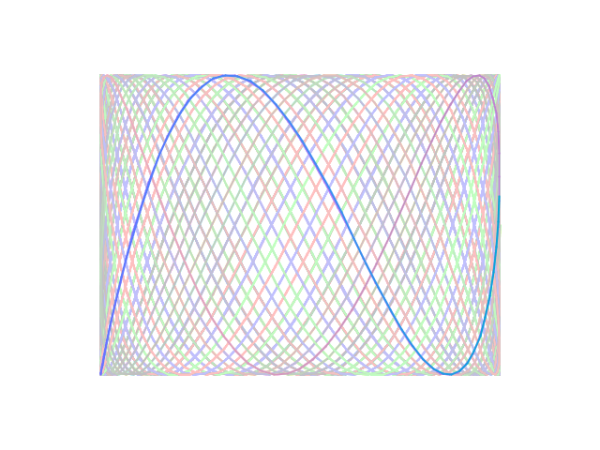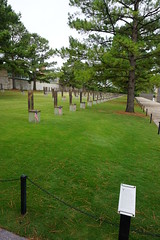Looking for a sequence of numbers…
Is there a sequence of N numbers such that, given a sum and the quantity of numbers that generated it, I can determine how many of each number were used? Read more…
There is a proposal pending on StackExchange to create a channel devoted to personal fabrication – defined as “making physical things using computer controlled equipment, including 3D printing & CNC milling or cutting machines”. The channel proposal also mentions the maker movement and hacker spaces.
There are a few criteria that must be met before this channel is created, which are detailed on that page. The most immediate requirement is to find 60 people who pledge to use the channel, followed by the need for 40 example questions.
I am very excited about this proposal, and invite anyone who is interested in these topics to visit the link and check out the details:
Personal Manufacturing proposal on StackExchange
I’ve also placed a badge / link supporting this proposal in the right sidebar, which will update to reflect its status.
Iterations of a Lissajous Curve Generator
In between working on other (far more vexing) problems I have been tweaking a somewhat simpler Processing sketch. Some months ago I watched Brendan Dawes’ talk at TEDx Manchester in which he uses Lissajous curves to get at the value of iteration in design. Dawes’ larger point is certainly well made, but I was also attracted to the Lissajous curve itself. I started trying to write my own generator, and have gone through several versions before landing at the current one.
Lego Mindstorms and Processing
The Lego Mindstorms platform is a great way to learn some basics of computer programming, robotics, and mechanical engineering principles. Frankly, it is also a great opportunity to re-discover the love of building with plastic bricks – as I did with the Color Sorter I wrote about several months ago. There are a wide variety of models available to build, particularly if you poke around the Mindstorms website or pick up a book like The Unofficial Lego Mindstorms Inventor’s Guide (by David J. Perdue and Laurens Valk).
The Uncanny and Impressionist in 123D Catch
I’ve written a few times now about the photo-modeling platform 123D Catch (formerly Photofly). While I haven’t posted anything lately about it, I have continued to expirment with the technology with some interesting outcomes.
The Uncanny
The more I’ve used Catch, the more the technology has fallen into the uncanny category for me. It started with my attempts to construct a model of myself:
Based on the comments on YouTube from the second of these videos, I’m hardly alone in feeling like this is somehow repulsive – but there is an attraction here for me as well. Seeing myself so obviously mangled is strange – especially when I think back to the feeling of being photographed. Voluntarily trying to keep absolutely still – to become an object, fighting my human urge to settle or move – was a bit foreign, and yet it was my ultimate failure to remain motionless that caused such a foreign outcome.
Moving further (and beyond the realm of Catch, specifically) it was exhilarating to see that 3d model made physical when it came out of the 3d printer where I work:
Beyond the process of capturing myself, I’ve had other strangely satisfying uncanny outcomes – like what happened when I tried to model the Statue of Liberty:
This model was generated from still frames extracted from a Creative Commons-licensed video of the real Statue of Liberty – but when I fed the stills through Catch, they turned the statue inside out.
Yet another bizarre outcome came from my first attempt to model the west facade of Ohio Stadium:
The cause of this mishap is more easily understood; I inadvertently included some images from a second photo session. That second session was focused on a section of land on the bank of the Olentangly River – but portions of Ohio Stadium were visible in the background, obscured by trees. The analysis software attempted to reconcile the two image sets, but was stymied by the occluded view of the stadium through the trees – with somewhat amusing results.
To be fair, a second attempt at modeling Ohio Stadium met with better – but still odd – results:
The Impressionist
A second conclusion that has become more apparent to me the more I use this tool is that Catch is incredibly Impressionist in its character. Not only are the best results generated when the model is stationary, even such subtleties as the quality of light and transparency enough to stymie the package. I have tried on a few occasions to go back and re-photograph some locations, and the outcome usually bears the scars of two objects having been grafted together.
In a way, I’m reminded of a passage from the Walter Benjamin story, “Funes the Memorious.” In it the character of Funes is described as irritated or bothered that the cat which he sees at one moment from the side is named the same as the cat he sees the next moment from behind. So fragile is his mental construct of the world that even slight variations are problematic – his ability to extrapolate from isolated impressions to a general comprehension of a subject is extremely minimal.
More to come
If this sounds like I’ve given up on the technology, allow me to clarify: I love this software. If anything, the fact that many models have these quirks or failures makes the process that much more interesting – and provides an opportunity to be intentionally disruptive.
Making Things…Web Development and Digital Fabrication
A good friend of mine took a class this past quarter, for which she was given the assignment to interview someone she knew. I was honored to be chosen as her subject, which gave us the opportunity to have a series of discussions about the work that I do for the Knowlton School of Architecture, and the threads I see running between two seemingly-unrelated halves of my job. I’m pretty happy with the result, but I’ll let you judge for yourself. More self-reflective thoughts after the break:
Fun with Lego® Mindstorms – the Color Sorter
LEGO® Mindstorms is a robotics platform that allows builders to construct and program a variety of different mechanisms using familiar bricks and an easy-to-use computer application that is built upon LabView. I’ve been exploring this platform for the past few months, including building the model seen in the video below:
Further Adventures with 123D Catch (formerly Photofly)
I wrote last month about some work I’d done with Autodesk’s photo-stitching platform, 123D Catch. Since then, I’ve continued to experiment with the platform – with mixed results. This post attempts to summarize the lessons that I’ve learned.
3D scanning from photographs
I’ve been interested in representing spaces in electronic terms for almost as long as I’ve been using computers. Some technologies, like VRML or ActiveWorlds or Second Life, tried to provide an interactive 3d experience via the web. Outside the internet there are also a bewildering array of scanning platforms that allow users to capture 3d geometry and export CAD-friendly files. These can cost significant amounts of money, although in the last few years there have been some intriguing low-cost systems.
It was in this context, then, that I discovered a new service from Autodesk several months ago: Photofly – which has just (November 10th, 2011) been re-branded with the unwieldy name “123D Catch.” This cloud-based service can create textured 3D models from digital photographs. No specialized hardware needed. Read more…
Using jQueryUI within Drupal 7
jQuery is crazy powerful – and the jQueryUI set of plugins is excellent for adding commonly-needed user interface controls like accordions, tabs, carousels, etc. Even better, with the release of Drupal7 we now have jQueryUI included in the core. But how do we actually get to use all this magic? I just had to figure this out, so in the hope of paying it forward, I’d like to share what I did, and how. There may be better ways to do this, but this is what has worked for me – if you can find a better way, please let me know! Read more…







